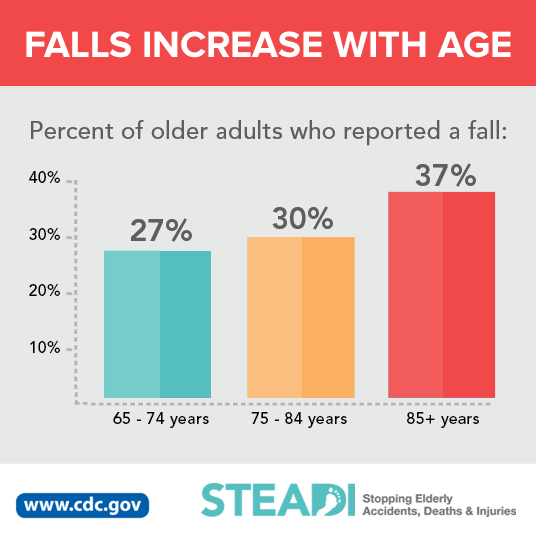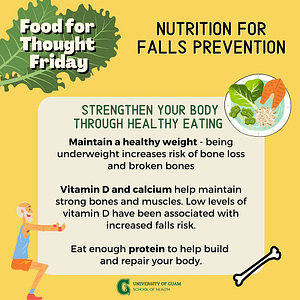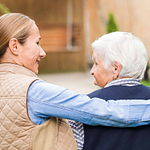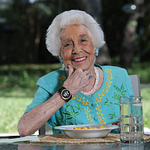Understanding Aging and Its Impact on Health
Aging, a natural, inevitable process, is characterized by the gradual decline in physiological functions, leading to reduced health and fitness. It increases vulnerability to diseases and health issues, including an elevated risk of falls. According to the CDC, chronic diseases such as heart disease, cancer, and diabetes are prevalent in 60% of older adults in the US.
Fall Risks in Older Adults
One significant health concern for older adults is the increased risk of falls. This is due to physiological changes such as muscle weakness, balance issues, or reduced vision. The National Institute on Aging states that more than one in four older adults fall each year, making falls the leading cause of both fatal and nonfatal injuries among seniors.

Consequences of Falls in the Senior Population
Falls can have severe consequences, including fractures, head injuries, and increased fear of falling, leading to reduced mobility and independence. The CDC reports that in 2014, falls caused approximately 27,000 deaths and 7 million injuries among older Americans.
The Role of Nutrition in Overall Health
Nutrition plays a critical role in maintaining our overall health. Each meal we consume daily should be balanced with the necessary vitamins, minerals, and other nutrients that our bodies require to function optimally. According to the CDC, inadequate nutrition can lead to a weak immune system, reduced physical and mental capacity, and increased susceptibility to various diseases.
Supporting Healthy Aging Through Good Nutrition
As we age, our nutritional needs change. Good nutrition can support healthy aging by reducing the risk of chronic diseases, improving mental acuteness, boosting energy levels, and promoting a strong immune system. The National Institute on Aging recommends a diet rich in fruits, vegetables, lean proteins, and whole grains for older adults.
Impact of Proper Nutrition on the Health of Older Adults
A study published in the American Journal of Clinical Nutrition showed that older adults who adhered to a Mediterranean-style diet, characterized by high intakes of fruits, vegetables, whole grains, and lean proteins, had a significantly lower risk of mortality compared to those who did not.
Case Studies Showing the Impact of Proper Nutrition on the Health of Older Adults
The Connection Between Nutrition and Fall Prevention
Understanding the role of nutrition in maintaining balance, strength, and physical function is crucial for fall prevention in older adults. Poor nutrition can lead to a decline in muscle mass, bone density, and overall physical function, which greatly increases the risk of falls.(source)
Specific nutrients such as Vitamin D, calcium, and protein play an integral role in fall prevention. For instance, Vitamin D and calcium are essential for maintaining bone health, thereby reducing the risk of falls. On the other hand, adequate protein intake is necessary for preserving muscle mass and strength.(source)



Scientific research supports the connection between nutrition and fall prevention. A study published in the Journal of Gerontology found that a diet rich in protein, Vitamin D, and calcium reduced the risk of falls in older adults by 20%.(source)
Recommendations for Nutrient Intake
For optimal fall prevention, older adults should aim for a minimum daily intake of 1200mg of calcium, 800 IU of Vitamin D, and 1.0-1.2g of protein per kilogram of body weight.(source)
By understanding the role of nutrition in fall prevention, we can significantly reduce the risk of falls and related injuries in older adults.
Key Nutrients for Aging and Fall Prevention
As we age, our nutritional needs change. Certain nutrients become critical to maintain our health and prevent falls. These include calcium, vitamin D, and protein.
Calcium and Vitamin D are paramount for bone health. They help increase bone density, reducing the risk of fractures. Protein supports muscle health, maintaining strength and physical performance.
Consuming a balanced diet rich in these nutrients is essential. Dairy products, leafy greens, and fish are excellent sources of calcium. Fatty fish, fortified foods, and sunlight exposure can provide vitamin D. Protein can be found in lean meats, eggs, and legumes.

For more detailed dietary guidelines for older adults, consult the U.S. Department of Health and Human Services.
The Role of Nutrition in Aging and Fall Prevention
Proper nutrition plays an essential role in preventing falls among older adults. By maintaining muscle health and bone density, we can ensure better balance, coordination, and overall physical performance.
- Calcium helps to increase bone density and strength.
- Vitamin D aids in calcium absorption and bone health.
- Protein supports muscle health and strength, reducing the risk of falls.
Ensuring a diet rich in these key nutrients can significantly contribute to aging gracefully and safely.
Dietary Recommendations to Support Healthy Aging and Prevent Falls
As individuals age, their dietary needs evolve. To support healthy aging and prevent falls, certain nutrients should be prioritized in the daily diet. For instance, the National Institute on Aging recommends a diet rich in fruits, vegetables, lean proteins, and whole grains.

Meal and Snack Suggestions
Ensuring adequate intake of key nutrients can be achieved through careful meal planning. For instance, a breakfast of whole grain toast, eggs, and a side of fruit provides protein, fiber, and essential vitamins. A snack of Greek yogurt offers calcium and protein, which maintain bone health (Academy of Nutrition and Dietetics) .

Managing Aging-Related Dietary Challenges
Common aging-related dietary challenges, such as decreased appetite or difficulty chewing, can be managed through tailored strategies. For instance, the National Institute of Diabetes and Digestive and Kidney Diseases suggests smaller, nutrient-dense meals for those with decreased appetite and softer foods for individuals with chewing difficulties.

The Crucial Role of Hydration in Aging and Fall Prevention
Hydration plays an indispensable part in maintaining physical function and preventing falls in older adults. Adequate fluid intake ensures the proper functioning of various bodily systems, including muscle function and maintaining balance. Studies have shown that even mild dehydration can impact physical performance and increase the risk of falls.

Guidelines for Proper Hydration in Older Adults
The Institute of Medicine suggests a daily water intake of 2.7 liters for women and 3.7 liters for men. However, each individual’s needs may vary depending on factors like climate, activity level, and overall health.
Tips for Encouraging Adequate Fluid Intake
- Keep a water bottle within reach for easy access.
- Encourage the consumption of water-rich foods like fruits and vegetables.
- Remind older adults to drink water regularly, not just when they’re thirsty.

With the right strategies, maintaining hydration in older adults can be an effective component of a comprehensive approach to aging and fall prevention.
The Synergy between Regular Physical Activity and Good Nutrition
Regular physical activity and good nutrition are two critical aspects of healthy aging and fall prevention. Coupled together, they create a powerful defense against the natural aging process and its associated risks. Studies have shown that regular exercise enhances the benefits of a balanced diet, leading to improved muscle strength, better balance, and increased bone density – all of which are essential in preventing falls in older adults.

Safe and Effective Exercises for Older Adults
Not all exercises are created equal, especially for older adults. It’s crucial to choose safe and effective exercises that enhance strength, balance, and flexibility. Walking, swimming, and tai chi are all excellent choices. Always consult a doctor or a trained fitness professional for personalized advice. Visit the CDC’s guide to physical activity for older adults for more information.
Integrating Regular Physical Activity into Your Daily Routine
Consistency is key when it comes to reaping the benefits of regular physical activity. Here are some tips to incorporate exercise into your daily routine:
- Start with low-impact exercises and gradually increase intensity as your fitness improves.
- Make it social. Join a group or class to make your workout more enjoyable.
- Choose activities you enjoy to increase the likelihood of sticking with them.
Remember, the best exercise is the one you’ll do regularly. By combining regular physical activity with a balanced diet, you’ll be making significant strides towards healthy aging and fall prevention.
Conclusion: A Comprehensive Strategy to Aging and Fall Prevention
Effectively managing aging and reducing the risk of falls necessitates a well-rounded strategy that incorporates optimal nutrition, regular physical activity, and other lifestyle modifications. Our understanding of the role of nutrition in aging and fall prevention has grown significantly, underscoring its crucial importance in this context.
It’s clear that good nutrition contributes to maintaining muscle strength, bone health, and overall vitality, reducing the chance of falls among older adults. However, this is just one element of a multi-pronged approach.
Physical activity, sleep quality, mental health, and social engagement also play crucial roles in this strategy. Therefore, a holistic approach that combines all these elements is the most effective way to tackle the challenges of aging and fall prevention.
For the best results, older adults and caregivers should seek professional advice to develop personalized nutrition and exercise plans. This personalized approach can make a significant difference in promoting healthy aging and reducing the risk of falls.





